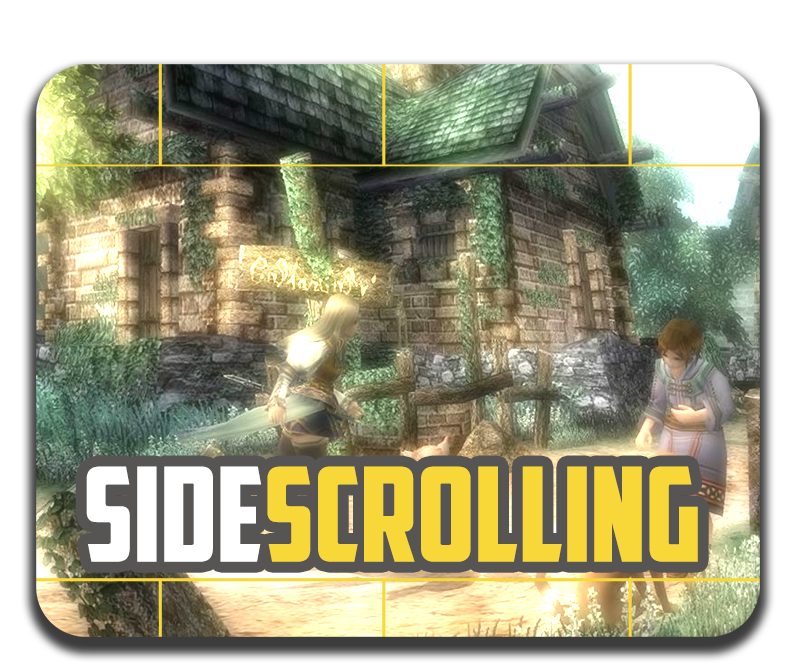
Written in 2019
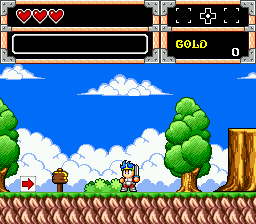 Back in the age of 2D graphics, there were basically just two options of how to display graphics. Game developers could either show everything from a top down perspective or from the side. For RPGs, top down visuals were used for the most part, but there were and are also some RPGs that still use a side scrolling view for regular gameplay.
Back in the age of 2D graphics, there were basically just two options of how to display graphics. Game developers could either show everything from a top down perspective or from the side. For RPGs, top down visuals were used for the most part, but there were and are also some RPGs that still use a side scrolling view for regular gameplay.
The first really popular side scrolling games were Jump'n'runs (Super Mario Bros., Alex Kidd, Giana Sisters), and even today, most gamers associate Jump'n'Runs with side scrolling visuals. And indeed, this perspective is made for action games that focus on running and jumping and less for exploring huge worlds.
However, this way of looking at games can really display some nice scenery!
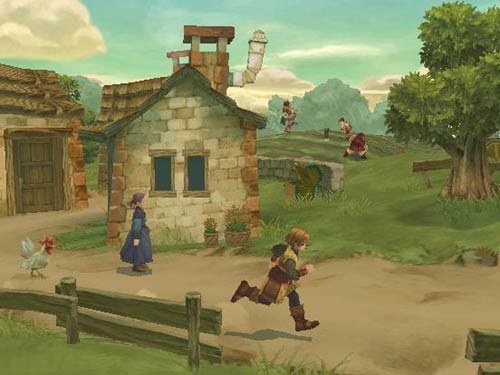 Walking from left to right and right to left limits the possibilities of navigation. Where top down games can at least represent a map where navigation in two axis is possible, a sidescrolling game is basically fixed to horizontal movement.
Walking from left to right and right to left limits the possibilities of navigation. Where top down games can at least represent a map where navigation in two axis is possible, a sidescrolling game is basically fixed to horizontal movement.
If vertical movement should be done, most side scrolling RPGs also implemented jumping, so that higher ledges and platforms can be reached. It's a really close gap between an RPG where jumping is possible and a jump'n'run game - the border between genres is hard to see in this case. Take the Monster World (Wonder Boy) series for example, some people (me included) say that the first installations are more jump'n'run than action rpg.
(Please note that I do not consider the action Wonder Boy games part of the Monster World series!)
A clever solution was introduced by Child of Light, a RPG made by Ubisoft that utilized the Grandia fight engine. Aurora, the heroine of the game, can fly in any direction - so even if the game is presented from the side, it controls just as a top down RPG.
 Among the first side scrolling RPGs were Wonder Boy in Monster Land and Zelda II: Links Adventure. They offered some RPG mechanics like purchasing items, towns, but also relied heavily on action game mechanics. Wonder Boy in Monster World developed the genre further and played a lot more like a regular action rpg and didn't rely on the player's skills in action parts. The games' focus was more on finding items and using them in the right places to proceed further.
Among the first side scrolling RPGs were Wonder Boy in Monster Land and Zelda II: Links Adventure. They offered some RPG mechanics like purchasing items, towns, but also relied heavily on action game mechanics. Wonder Boy in Monster World developed the genre further and played a lot more like a regular action rpg and didn't rely on the player's skills in action parts. The games' focus was more on finding items and using them in the right places to proceed further.
Turn based side scrolling RPGs are scarce. Most notable are Child or Light or games from tri-ace like Valkyrie Profile: Lenneth, Valkyrie Profile: Silmeria or Radiata Stories. The latter switches into a 3D top down view during battles, but the original Valkyrie Profile stayed true to its origins as a side scrolling game in every game mode (except the overworld).
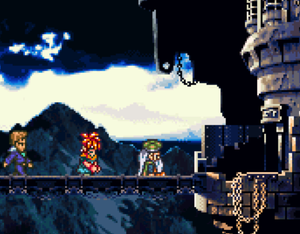 The side perspective has some disadvantages in travelling the world, but it makes up in scenery. If you only watch a game from the top down, you can never see what's going on in the background, how hills and mountains look in this game, what the sky is like or what's close and what's near.
The side perspective has some disadvantages in travelling the world, but it makes up in scenery. If you only watch a game from the top down, you can never see what's going on in the background, how hills and mountains look in this game, what the sky is like or what's close and what's near.
Whenever there is the need to show what's going on in the background or how the background looks at all, even games that are usually shown in a top down view switch over to a side view.
Take Chrono Trigger here for example (we also mentioned this in the top down perspective description): In the scene depicted on the screenshot, the game acts as if it was a sidescrolling game - although, of course, controls and mechanics were still those of a top down view. The side view was only used for certain moments, but it never changed the gameplay of the title itself.
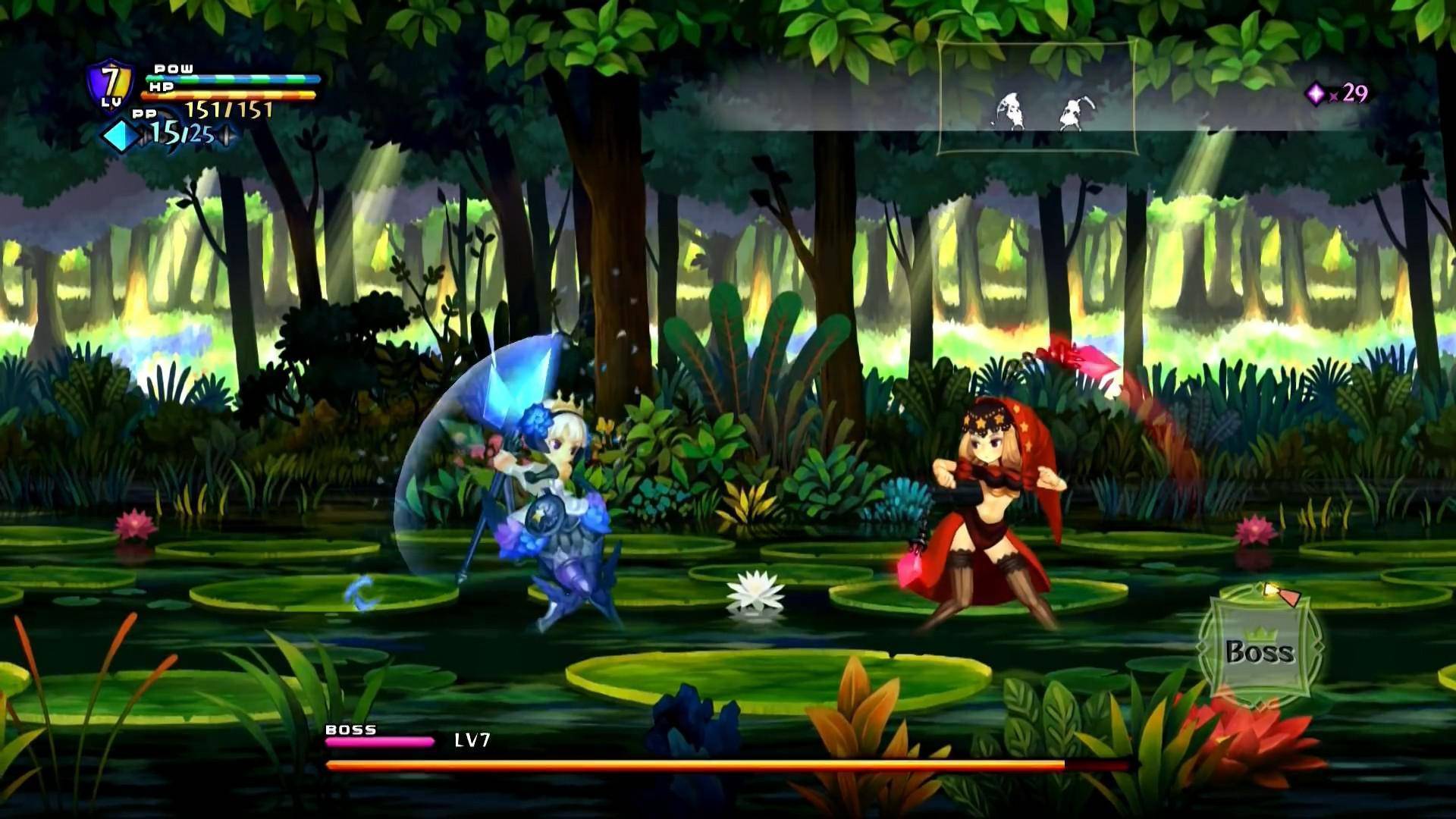
There are a couple of newer games that utilize a side scrolling perspective. There is 2014s Child of Light (which has a memorbale moment here on the site) or 2017s Dragon's Trap remake; one being a classic turn based rpg, the other one an early action RPG with some Metroidvania vibe.
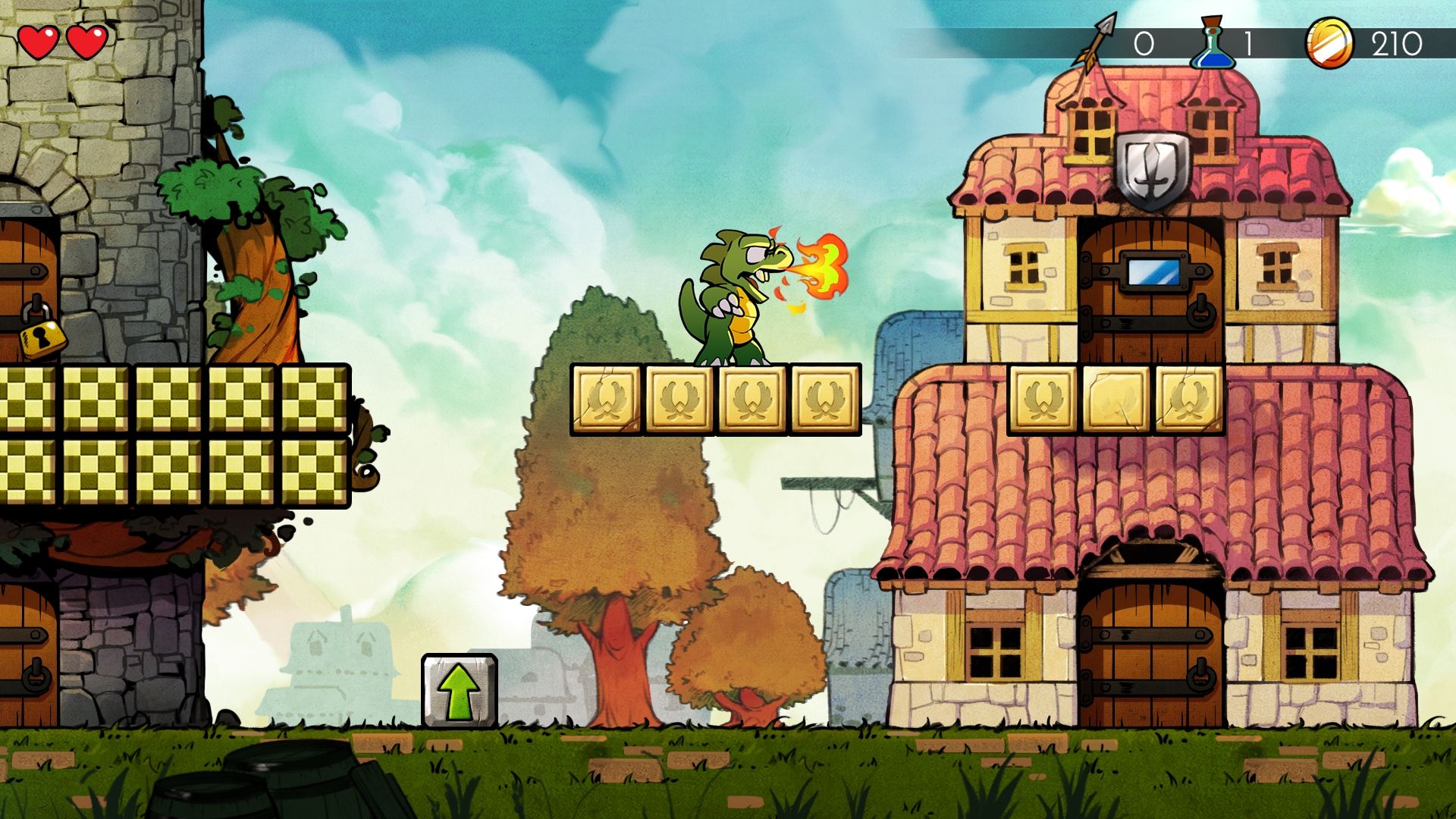 But also other games are released from time to time like Odin Sphere, which is a side scrolling action RPG where the second game of the series was just released in 2016.
But also other games are released from time to time like Odin Sphere, which is a side scrolling action RPG where the second game of the series was just released in 2016.
So you see, there is not much going on in the world of RPGs in terms of games with a side scrolling perspective, but ever so often, a game with this type of view mode is being released. It's a beautiful, albeit not that convenient way of displaying RPGs.